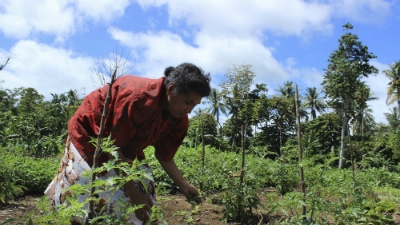Apia, Samoa, September 9, 2014 - This year the third Small Island Developing States conference was held in Samoa - a beautiful tropical island country lying in the heart of the South Pacific. During the conference delegates in the capital Apia populated its busy hotels, restaurants and cafes.
The nation’s food is a major part of Samoan culture, and ties to the land are key to people’s cultural identity. “For Samoa,” Prime Minister Tuilaepa Sailele Malielegaoihas remarked, “our food expresses our intimate relationship with the land, the sea and our ancestors.”
Food security for small island economies
The country faces challenges of food security common to many small island economies. Across the Pacific, people’s diets have changed radically over recent years.Corned beef and fatty meat imports have become staple parts of the local diet, alongside cheap white rice and imported cereals. Fast food, flour and fizzy drinks have proliferated across restaurant tables and supermarket shelves.
Aside from the significant public health concerns, high dependence on food imports can come at a big cost, particularly given the distance of many island countries from larger markets. In Vanuatu, for instance, the average household spends an estimated 15% of its food budget on imported rice, compared to just 6% on local crops.
High dependence on global commodity markets to meet basic needs also leaves people vulnerable when global prices spike.Following the food and fuel price crises of 2008, the cost of a bag of rice tripled. The tiny atoll nation of Kiribati was subsequently forced to turn to food aid and increasingly expensive transport subsidies to meet the needs of hungry residents.
Re-valuing food culture in the Pacific
But in Samoa, there are signs that things may slowly be changing. More of Apia’s restaurants seem to be taking pride in marketing traditional Samoan cuisine made from local produce. A recent recipe book, produced at the request of the Prime Minister, features a tantalizing array of healthy Samoan dishes with ingredients “from the heart of Polynesia”, while health promotion efforts look to inspire a growing interest in the origins of the food on people’s plates.
The government is also starting to focus on rejuvenating its agricultural industry. A recent World Bank-assisted project is one example. The Samoa Agriculture Competitiveness Enhancement Project is working with farmers not only to increase their income, but also to ensure that local produce captures a growing share of the domestic food market.

